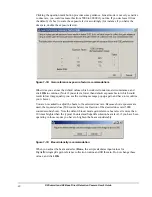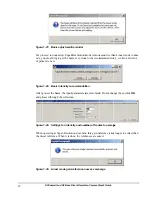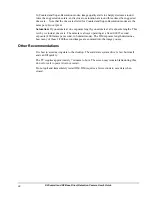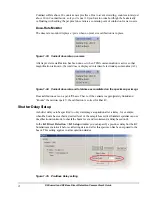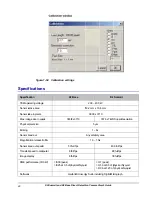
K2 Summit and K2 Base Direct Detection Camera User's Guide
35
figure 1-39. Dose Fractionation mode settings
Dose Fractionation mode uses a dedicated solid state raid array to store temporary data,
allowing the high frame rate acquisitions enabled by this mode. Use the Dose Fractionation
Setup dialog to configure the drives that are used to store temporary data, and to enable or
disable multi-threaded accumulation of data from the temporary storage into frames and
images. Further options in this palette allow control over the pre-exposure time used in the
acquisition. This pre-exposure time can be used to delay the start of data collection until the
shutter has stabilized.
The final three options allow fine-grained control over output of images from Dose
Fractionation mode imaging. The
Show image stack
checkbox enables or disables the
display of the image stack that is collected during image acquisition. The
Align images
checkbox enables or disables the automatic alignment and accumulation of frames into a
single drift corrected image. Finally the
Cross Correlation Filter
drop down item optimizes
the automatic alignment and frame accumulation using a customized image filter.
It is important to note, within the context of discussing dose-fractionated alignment and drift-
correction, that one of the most important image quality issues affecting the quality of
alignments is the suppression of fixed pattern noise. The “fixed pattern noise ratio” diagnostic
described in the addendum explains how to measure the degree to which one uniform-
illumination image is independent from the next. This is used to indicate when to acquire a
fresh hardware dark reference or gain reference. When the fixed pattern noise ratio is
maintained at a low level, the amount of self-correlation in the alignment of successive dose-
fractionated slices will be minimized and alignment results will be optimized.
Shutter Configuration
One shutter or beam blanker is required with a standard K2 and also supports a tandem setup
camera. An additional shutter may be included for the configured TEM. Using the TEM
shutter before the specimen is necessary for low dose work.
When the K2 shutter is in use and active, the beam is not present on the TEM screen. The
override signal from the TEM provides an interlock signal to disable the shutter when the



